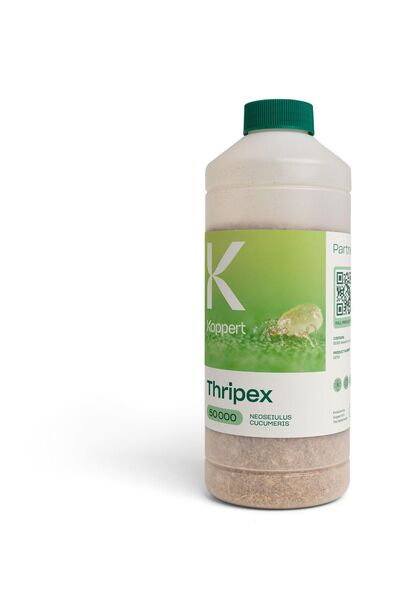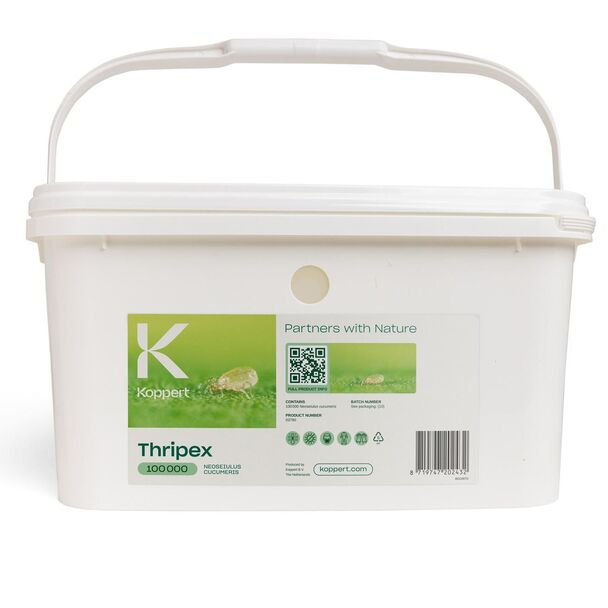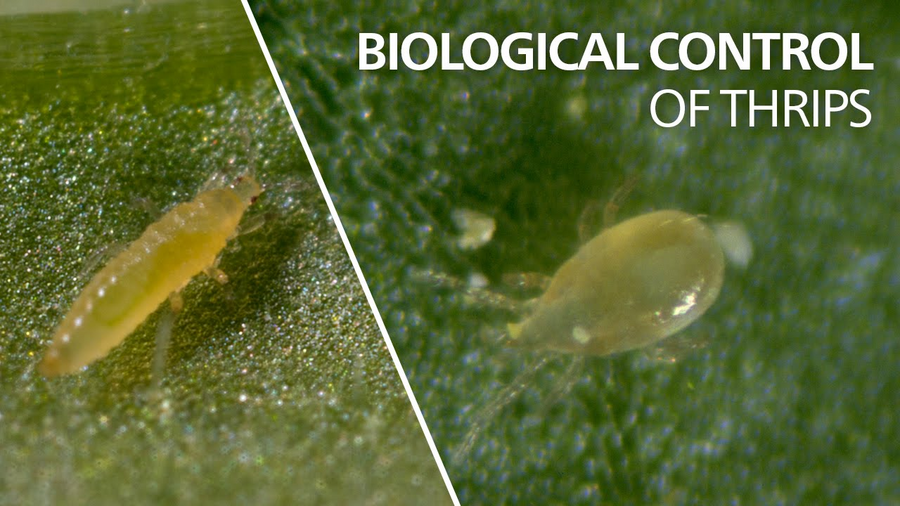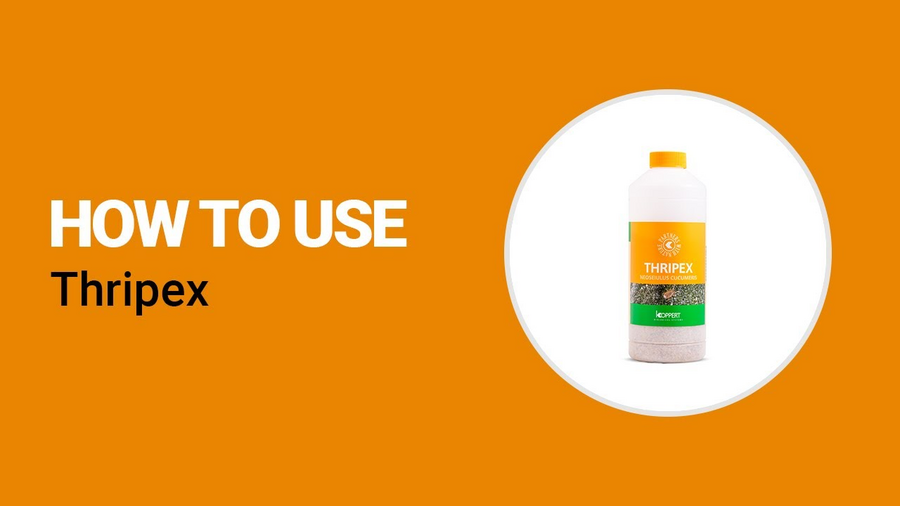Use for
Pests
Young larvae of various thrips species.
Crops
Do not use in tomato.
How it works
Mode of action
Predatory mites pierce their prey with their sucking mouthparts and suck out the contents.
Product specifications
| Pack size | 50,000; 100,000; 500,000 predatory mites. |
| Presentation | 1,000 ml bottle; 6 litre bucket. |
| Carrier | Bran. |
Directions for use
Application
- Turn and shake the bottle or bucket gently before use
- Bottle: Push the centre of the cap to open the dosage hole
- Bucket: Use a spoon to distribute Thripex
- Sprinkle material on leaves or put small heaps on rockwool slabs
- Make sure the material remains on the introduction site for at least a few hours after introduction
- Choose at least 4,000 introduction points per hectare, evenly distributed over the total surface
- Can also be applied with (Mini)-Air(o)bug
Dosage
The dosage of Thripex depends on climate, crop and pest density and should always be adjusted to the particular situation. Start introduction as soon as the first pest mites are detected in the crop. Introduction rates typically range from 50-100 per m2/release. Releases should be repeated if necessary. Consult a Koppert advisor or a recognized distributor of Koppert products for advice on the best strategy for your situation.
Environmental conditions
Neoseiulus cucumeris is most effective at temperatures between 15 and 25°C (59 and 77°F). It is not effective at temperatures above 30°C/86°F. Neoseiulus cucumeris is sensitive to relative humidity below 70%.
Combined use
Can be combined with Orius spp.. Do not combine with other generalist predatory mites (Amblyseius swirskii, Amblydromalus limonicus, Transeius montdorensis, Amblyseius andersoni).
Precautions
Application of this product can cause sensitization or allergic reactions, we therefore advise to take the necessary precautions.
Side effects
Pesticides can have (in)direct effects on biological solutions. Find out which pesticides have side effects on this product.
Product handling
Storage time after receipt
1-2 days.
Storage temperature
10-15°C/50-59°F.
Storage conditions
In the dark, provide ventilation to prevent CO2 accumulation.
Downloads
"The general conditions of Koppert (Koppert B.V. and/or of its affiliated companies) apply. Only use products that are permitted in your country/state and crop. Always comply with the conditions specified in local product registrations. Koppert cannot be held liable for unauthorized use. Koppert is not liable for any loss of quality if the product is stored for longer than recommended and/or under incorrect conditions."



